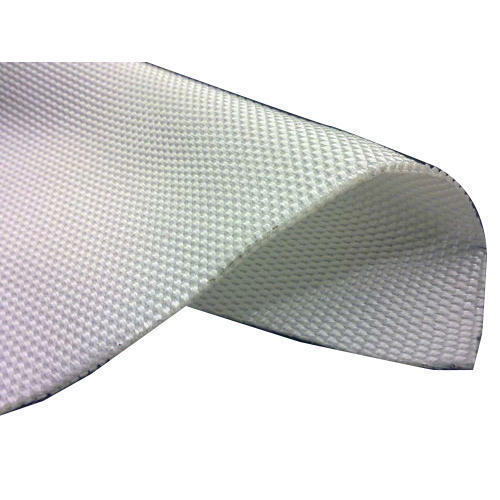Geotextiles
Geotextiles form one of the largest groups of geosynthetics. These are woven, non woven or knitted textiles consisting of natural or synthetic fibers. These are flexible and permeable in nature. Geotextiles are generically made from plastic materials, mostly polypropylene and polyester, but also polyethylene, polyamide (nylon), polyvinylidene chloride, and fibreglass (e.g., in roadway substrates) are used. Sewing thread for geotextiles is generally made from any of the above polymers.
Woven Geotextiles
Woven fabrics are manufactured on looms by interlacing two orthogonal sets of fibers usually referred to as the warp and weft directions (parallel to and perpendicular to the direction of manufacture, respectively). These materials have excellent filtration, drainage, isolation, reinforcement, impervious, protective effect, with light weight, high tensile strength, good permeability, high temperature resistance, antifreeze, anti-aging, corrosion resistance. They are now used in a wide range of civil engineering applications, such as roads, embankments, retaining structures, airfields, railways, dams and reservoirs, canals, coastal defences, and so on. Geotextiles have the ability to reinforce, protect, filter, drain and separate, and many applications use them alongside soil, placed at the tension surface for strength purposes.
Geotextiles form one of the largest groups of geosynthetics. These are woven, non woven or knitted textiles consisting of natural or synthetic fibers. These are flexible and permeable in nature. Geotextiles are generically made from plastic materials, mostly polypropylene and polyester, but also polyethylene, polyamide (nylon), polyvinylidene chloride, and fibreglass (e.g., in roadway substrates) are used. Sewing thread for geotextiles is generally made from any of the above polymers.
Woven Geotextiles
Woven fabrics are manufactured on looms by interlacing two orthogonal sets of fibers usually referred to as the warp and weft directions (parallel to and perpendicular to the direction of manufacture, respectively). These materials have excellent filtration, drainage, isolation, reinforcement, impervious, protective effect, with light weight, high tensile strength, good permeability, high temperature resistance, antifreeze, anti-aging, corrosion resistance. They are now used in a wide range of civil engineering applications, such as roads, embankments, retaining structures, airfields, railways, dams and reservoirs, canals, coastal defences, and so on. Geotextiles have the ability to reinforce, protect, filter, drain and separate, and many applications use them alongside soil, placed at the tension surface for strength purposes.

The Bombay Textile Research Association (BTRA), a pioneer textile research institute over the 65+ years, was established in 1954 by Govt. of India along with the industry association to boost research, conducting testing, consultancy and certification in the field of textile, polymers, fibers and other materials.
Following are the tests done at BTRA for woven geotextile
- Mass per square metre [ASTM D: 5261 / ASTM D: 3776 / ISO: 9864 / IS: 14716]
- Tensile Strength & Elongation (Warp and Weft) [ASTM D: 5035 / IS: 1969]
- UV Resistance Exposure to Light Moisture & Heat in Xenon Arc Type Apparatus [ASTM D: 4355 / BS EN: 12224 / GRI: 155]
- Tensile Strength (Before & After Exposure UV Xenon Arc) [ASTM D: 5035]
- Trapezoid Tear (Warp & Weft) [ASTM D: 4533]
- Index Puncture Resistance [ASTM D: 4833]
- Apparent Opening Size [ASTM D: 4751]
- Water Permeability [ASTM D: 4491 / BS: 6906–3 / IS: 14324 / ISO: 11058]
- Grab Tensile Strength & Elongation [ASTM D: 4632]
- Ball Bursting [ASTM D: 751 / D: 3787]
- Thickness [ASTM D: 5199]
- Cone Drop Test [EN: 918 / ISO: 13433] (Dynamic Puncture Test)
- Seam Strength [ASTM D: 4884 / ISO: 10321]
- Pore Size by Porometer [ASTM D: 6767]
- Abrasion Resistance [ASTM D: 4886]
- Tensile Strength (Before & After by ASTM D: 5035)
- CBR Puncture Strength [ASTM D: 6241] [ISO:12236]
- Asphalt Retention Test [ASTM D: 6140]
- Pull out resistance in soil [ASTM D:6706 / DIN EN 13738]
- Chemical resistance (acid & alkali) of geotextiles [DIN EN 14030]
- Deterioration of geotextiles from outdoor exposure [ASTM D:5970]
- Resistance to oxidation [ISO 13438]

